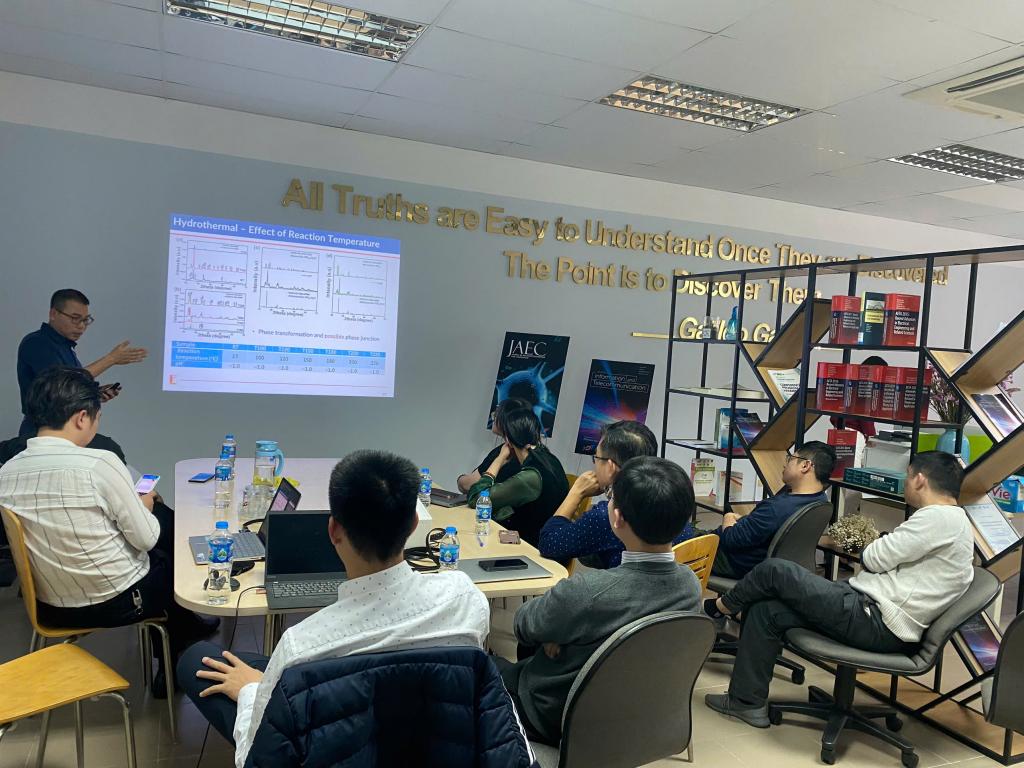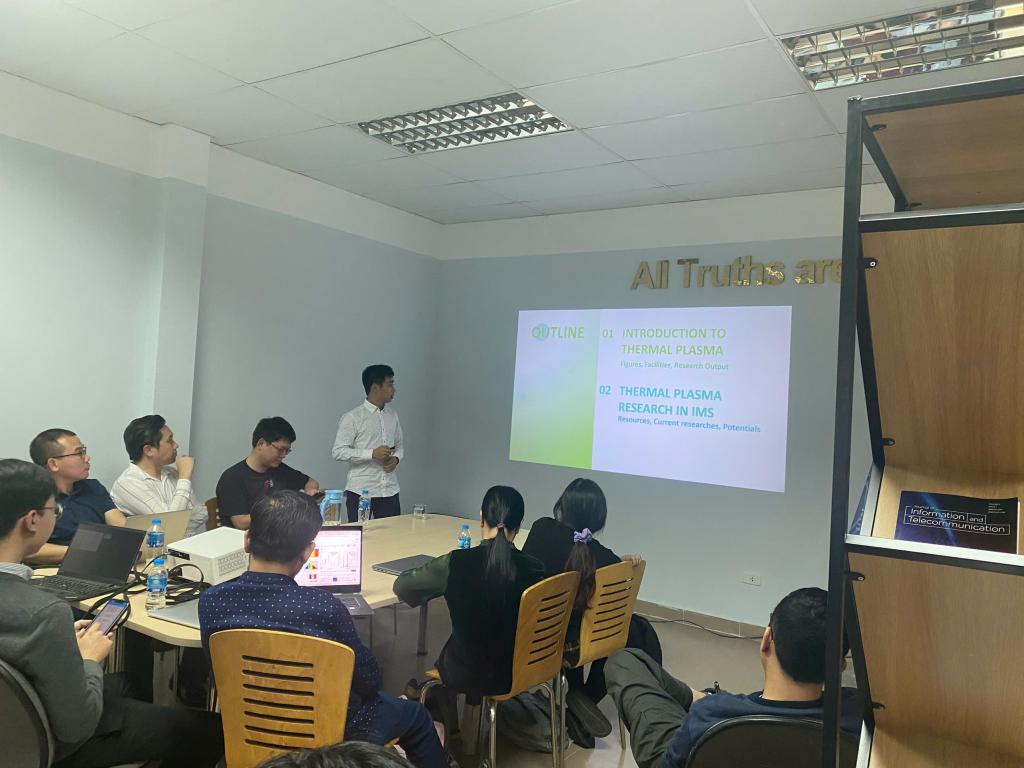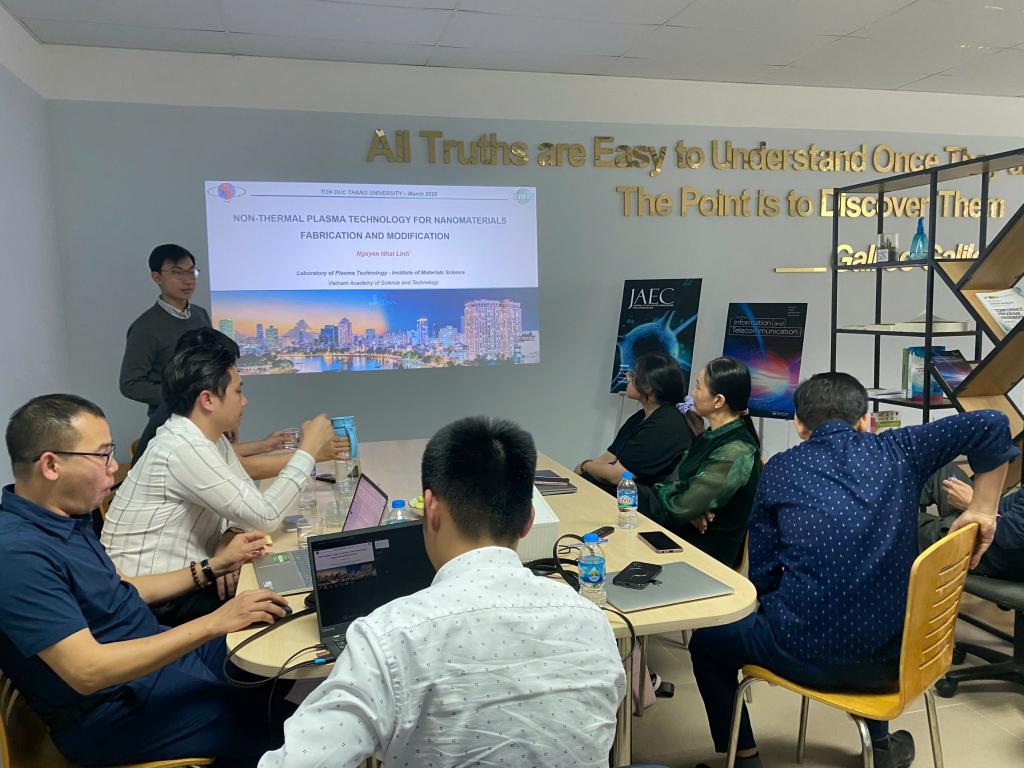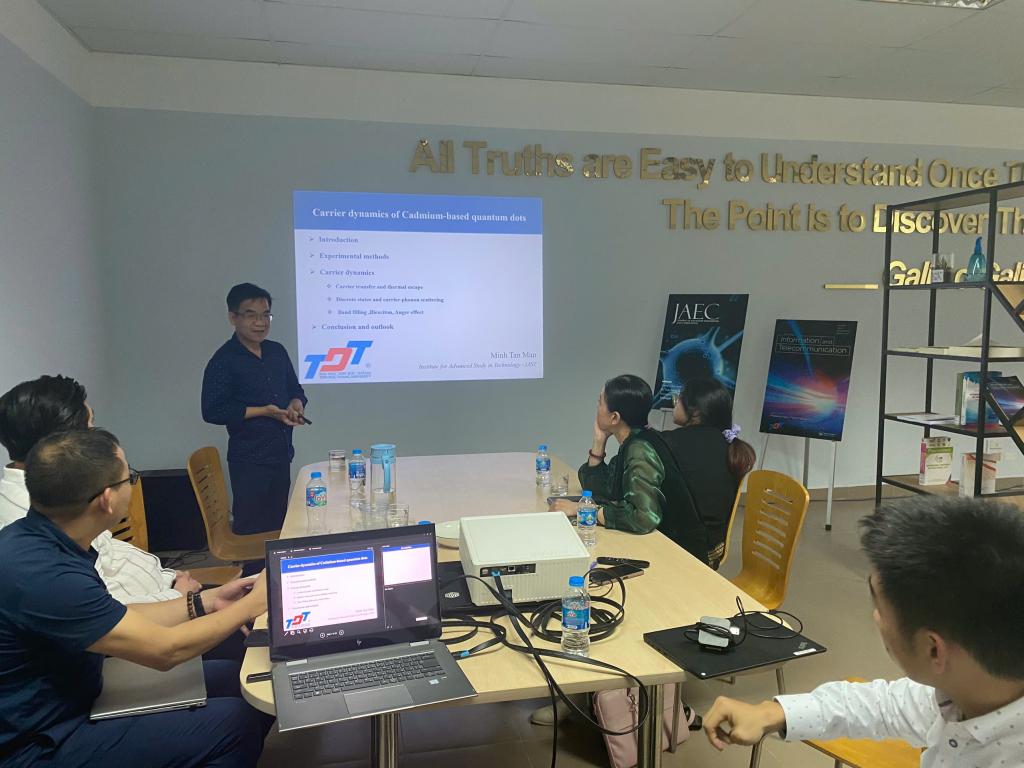Seminar by Prof. Dr. Nguyen Thanh Tung, Assoc. Prof. Dr. Nguyen Cong Tu and Dr. Man Minh Tan
At 14:00, March 11, 2025, IAST organized an academic exchange session at Room 604 - Office of the the Institute for Advanced Study in Technology Ha Noi
Prof. Dr. Nguyen Thanh Tung presents about "Ứng dụng của công nghệ plama trong chế tạo và biến tính vật liệu tiên tiến"
Abstract:
Trong những năm gần đây, công nghệ plasma đã trở thành một phương pháp tiên tiến trong chế tạo và biến tính vật liệu, mở ra nhiều hướng đi mới trong khoa học và công nghệ vật liệu. Công nghệ plasma bao gồm plasma lạnh và plasma nhiệt với các đặc trưng độc đáo và phù hợp với các đối tượng vật liệu khác nhau. Plasma lạnh, với nhiệt độ điện tử cao nhưng nhiệt độ plasma thấp, phù hợp cho các quy trình xử lý bề mặt vật liệu và tổng hợp vật liệu nano trong dung dịch. Trong khi đó, plasma nhiệt, với nhiệt độ plasma rất cao (6.000 – 10.000°C) rất hiệu quả trong quy trình tổng hợp các loại vật liệu nano kim loại và phi kim với quy mô lớn. Trong báo cáo này, chúng tôi trình bày các kết quả đã đạt được của nhóm nghiên cứu trong việc sử dụng công nghệ plasma lạnh và plasma nhiệt để chế tạo và biến tính vật liệu nano, định hướng ứng dụng trong lĩnh vực môi trường và năng lượng.
Assoc Prof, Dr. Nguyen Cong Tu presented on"WO3 nanostructures and WO3-based nanocomposites: Facile and controllable synthesis for sustainable applications"
Abstract:
Tungsten oxide (WO3) is a typical n-type metal oxide semiconductor with a tunable optical bandgap of 2.5 – 3.2 eV. Moreover, WO3 is stable in acid environments, harmless to humans, abundant in the Earth’s crust, and especially has the electrochromic property. These properties have made WO3 one of the most studied metal oxides for various applications such as gas sensors, photocatalysis, and smart windows applications. . . Recently, the study on WO3 materials is once more blooming for cutting-edge applications such as water splitting, smart window, pathogen control, optoelectronic devices, film-based field-effect transistor, and even surface-enhanced Raman scattering substrate. These cutting-edge applications mainly rely on the high charge transferability of WO3. The charge transferability of tungsten oxide originates from the crystal structure and the oxygen vacancy on WO3. Moreover, the morphology of tungsten oxide nanostructures can be used as a controlling parameter for various applications.
Tungsten oxide has several crystal structures, such as orthorhombic, monoclinic, hexagonal, and triclinic, which are stoichiometric allotropes of WO3 which are the stoichiometric structure WO3. Besides these stoichiometric structures, tungsten oxide could exist stably in the Magnéli phase - a non-stoichiometric allotrope of WO3−x, hydrated structures (WO3∙nH2O with 2 ≥n >0). The different crystal structures could be attributed to the different arrangements of the WO6 octahedron via corner- or edge-sharing arrangements, with and without intercalation of water molecules. The arrangement of WO6 octahedra creates tunnels through which small ions could intercalate resulting in ion transferability. Among these crystal structures of tungsten oxide, hexagonal WO3 (h-WO3) and hydrated WO3∙nH2O structures have received lots of concern due to their unique structures and properties, which have great potential in electrochromic and energy-related applications. Notably, amorphous tungsten oxide was reported to have the highest electrochromic properties but low stability. Recently, many efforts have been made to design new structures – phase junctions – to use up the advances and minimize the drawbacks of different structures of tungsten oxides.
Tungsten oxide nanostructures and tungsten oxide-based nanocomposites can be synthesized through various methods, including decomposition, pulsed laser ablation, electro-exploding wire, physical vapor deposition, electrodeposition, and wet chemical methods such as acid precipitation and hydrothermal … In these methods, the hydrothermal route is one of the most commonly used methods because of its facile process, simple required facilities, homogeneous product, mild working conditions, and environmental friendliness. However, the hydrothermal method usually requires a long time to complete and needs a lot of energy to maintain the reaction temperature in the range of 100 to 200℃. To fix these problems, many endeavors have been spent on optimizing or improving the synthesis process of WO3 nanostructures to save time and energy.
In our research, we focus on facile, controllable, cost-effective, energy-saving, and bath synthesis WO3 nanostructures (with designed crystal structures and designed morphology) for sustainable applications like photocatalysts, gas sensors, electrochromic devices, energy storage devices, water splitting applications. To further widen the applicability of WO3, we also composite/hybrid WO3 nanostructures with different nanomaterials such as Ag nanoparticles, AgX (X=Cl, I, Br), and 2D materials (graphene oxide, g-C3N4).
Dr. Man Minh Tan presents about "Carrier dynamics in Cadmium (Cd)-containing Quantum dots"
Abstract:
Quantum dots (QDs) with special properties such as large nonlinear optical response, ultrafast signal switching, quantum efficiency, and high temperature stability are important in photonic devices, and optical computing. The potential applications of QDs quickly attract the attention of technology and business communities, because of recent evidence of their applicability in high-performance biomedical technologies, QD-LED lighting, quantum dot lasing, and luminescent solar concentrators (LSCs). Understanding of carrier dynamics in quantum dots not only contributed to the understanding of chem-physical properties, but also help to precisely control their shape and sizes for application devices.
In this talk, we will present our understanding of the carrier dynamics in Cd-containing QDs (CdTe/ZnTe, CdSe/CdS, CdSe/ZnS) including the processes: (1) excitation energy redistribution, (2) carrier-carrier and carrier-phonon scattering, (3) Auger recombination.

Assoc. Prof. Dr. Nguyen Cong Tu presented at the seminar


Prof. Dr. Nguyen Thanh Tung's research group reported at the seminar

Dr. Man Minh Tan reported at the seminar
- Log in to post comments
